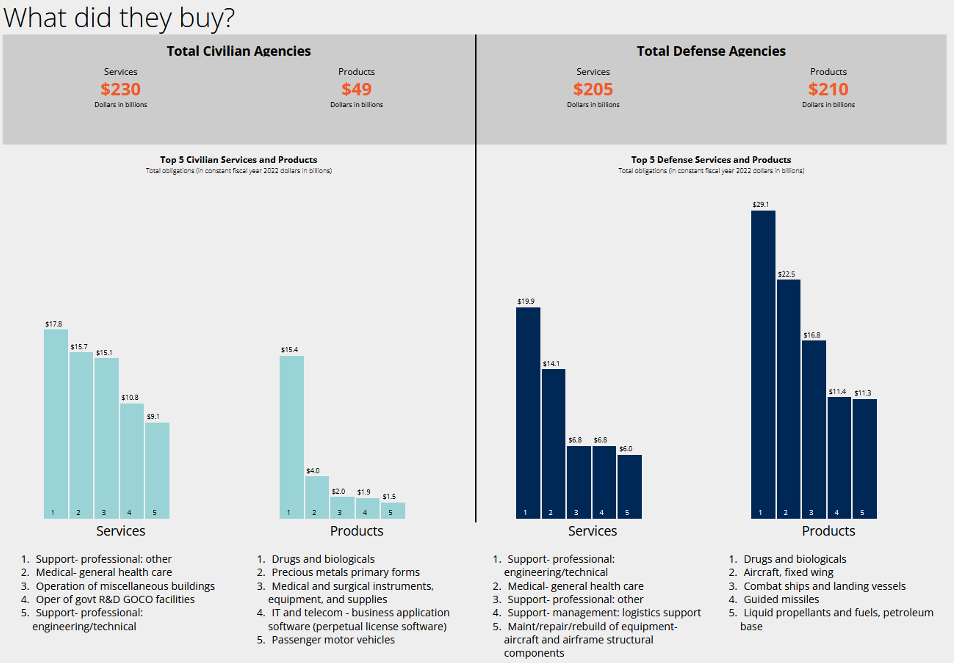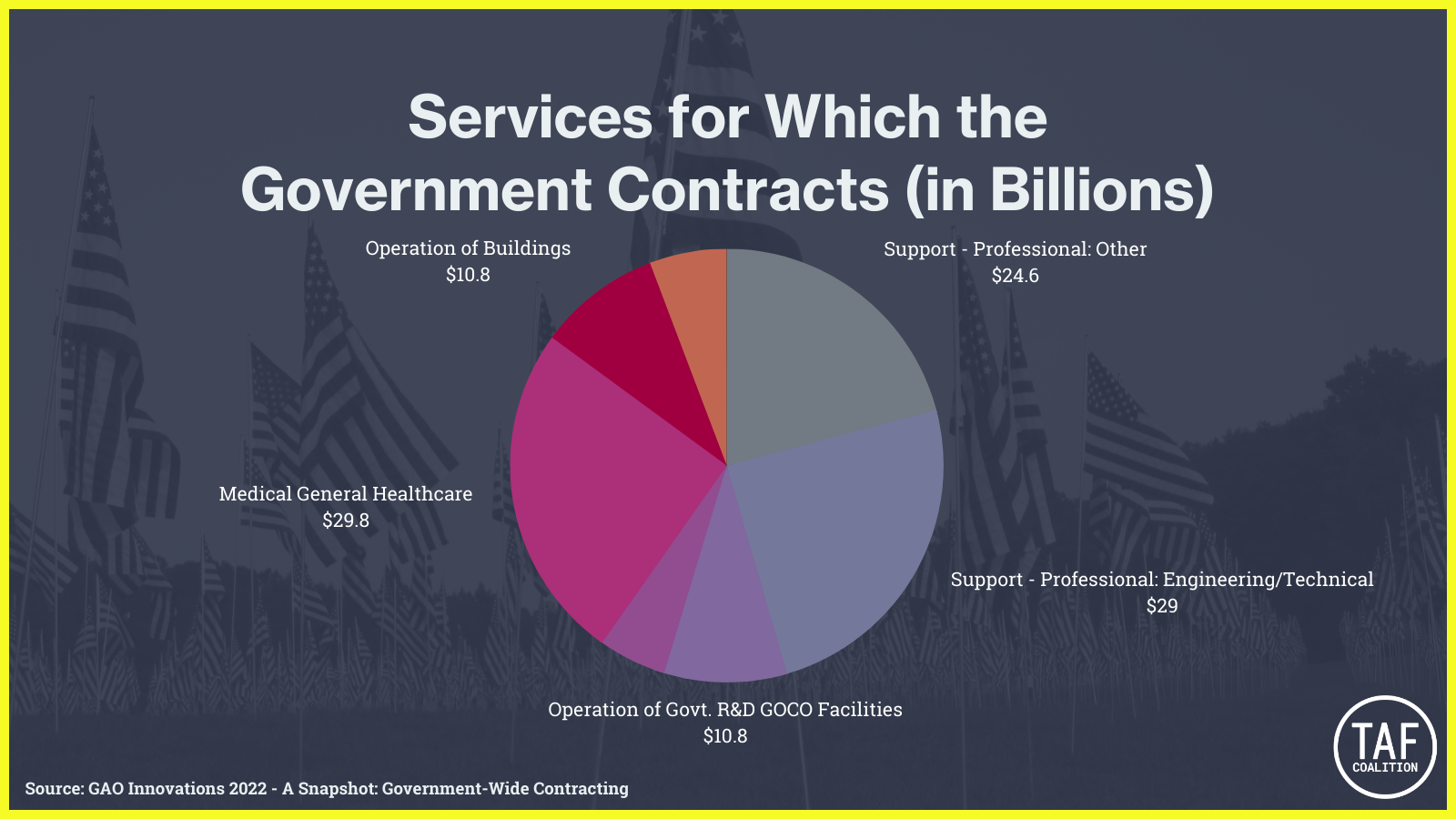At Your Service: Government Procurement of Services
Each year the Government Accountability Office (“GAO”) prepares a report of what the government bought the year before, the “Snapshot of Government-Wide Contracting.” It summarizes data reported to the Federal Procurement Data System on obligations made via “procurement contracts.”[1] According to the GAO, the federal government contracted for $694 Billion in services and products in FY 2022.
Procurement is most commonly associated with the government’s purchases of things. But continuing a pattern seen in prior years “government-wide spending on services outpaced spending on products” in FY22. All in, the federal government contracted for $435 Billion in services provided to civilian and defense agencies, as compared to $259 Billion in products. The difference was much more disparate in civilian spending than military spending: civilian expenditures were nearly 5:1 services to product spending.

The tilt towards spending on services may come as a surprise considering the federal government directly employees some 2 million people. What services could the federal government possibly contract for that its 2 million employees don’t already do? Using the GAO’s data, there are seven major categories of services for which the government contracts.

Medical – General Healthcare services was the government’s largest services line item at $29.8 Billion, split almost equally among civilian and military. That’s not a surprise: healthcare costs account for more than a third of GDP and are steadily increasing.
Somewhat more surprising, however, the federal government had contract obligations totaling almost the same as healthcare: $29 Billion, described as “Support – professional: engineering/technical services” in 2022 ($9.1B by civilian agencies and $19.9B by defense agencies).
The federal government’s procurement of tens of billions of dollars for engineering and technical services is also vulnerable to fraud. Engineering and construction companies – large and small – have reached settlements with the government to resolve False Claims Act violations for everything from providing defective services to time card fraud to misrepresenting a business as a small business to secure a contract. For example:
– In 2008, Bechtel/Parsons Brinkerhoff, Bechtel Infrastructure Corp, PB Americas and 24 section design consultants agreed to pay a total of $447 million in settlement of criminal and civil liabilities in the collapse of part of the I-90 tunnel and defects in the wall of the Tip O’Neill Tunnel in Boston. Allegations included failing to provide adequate construction management and quality assurance services to the Central Artery Tunnel, known as the Big Dig.
– In 2010, CSI Engineering agreed to pay $200,000 to settle allegations that it made false statements to secure contracts intended for HUBZone small businesses.
– In 2013, CH2M Hill agreed to pay a total of $19 million to settle allegations first made in a qui tam complaint of time card fraud in its contract with the Department of Energy at the Hanford Nuclear facility.
– In 2016 Bechtel agreed to pay a total of $67.5 million to settle allegations first made in a qui tam complaint of faulty design and construction of the U.S. Department of Energy’s Waste Treatment & Immobilization Plant project in Hanford, Washington.
– In 2022, seven South Korean companies agreed to pay a total of $3.1 million to resolve allegations that they violated the False Claims Act by engaging in a bid-rigging conspiracy that targeted the Army Corps of Engineers for construction and engineering work on military bases in South Korea.
– In 2022, Hensel Phelps Construction agreed to pay $2.8 million and admit misconduct in the award of a large contract to construct the Armed Forces Retirement Home’s New Commons/Health Care Building in Washington, DC. The contract included a condition that Hensel Phelps implement a subcontract plan to provide opportunities for service-disabled veterans. A qui tam complaint alerted the government to Hensel Phelps’ utter failure to provide for the service- disabled contractors in the construction of a building intended to serve veterans.
As these examples illustrate, the government relies on engineering and technical services in a wide array of projects across civilian and defense agencies. Efforts to expose fraud in these kinds of services relies on the combined efforts of government investigators and whistleblowers. Even though fraud in service contracts may not grab headlines as much as healthcare fraud, it is a good illustration of how the public-private partnership contemplated by the False Claims Act recovers millions on critical government projects undertaken by civilian and defense agencies.
Kate Scanlan is a Founding Attorney at Keller Grover, LLP
[1] Note, procurement contracts do not reflect all government spending. Medicare reimbursements totaling trillions of dollars, for example, would not be tracked in this data system. Those are tracked with a different data set.